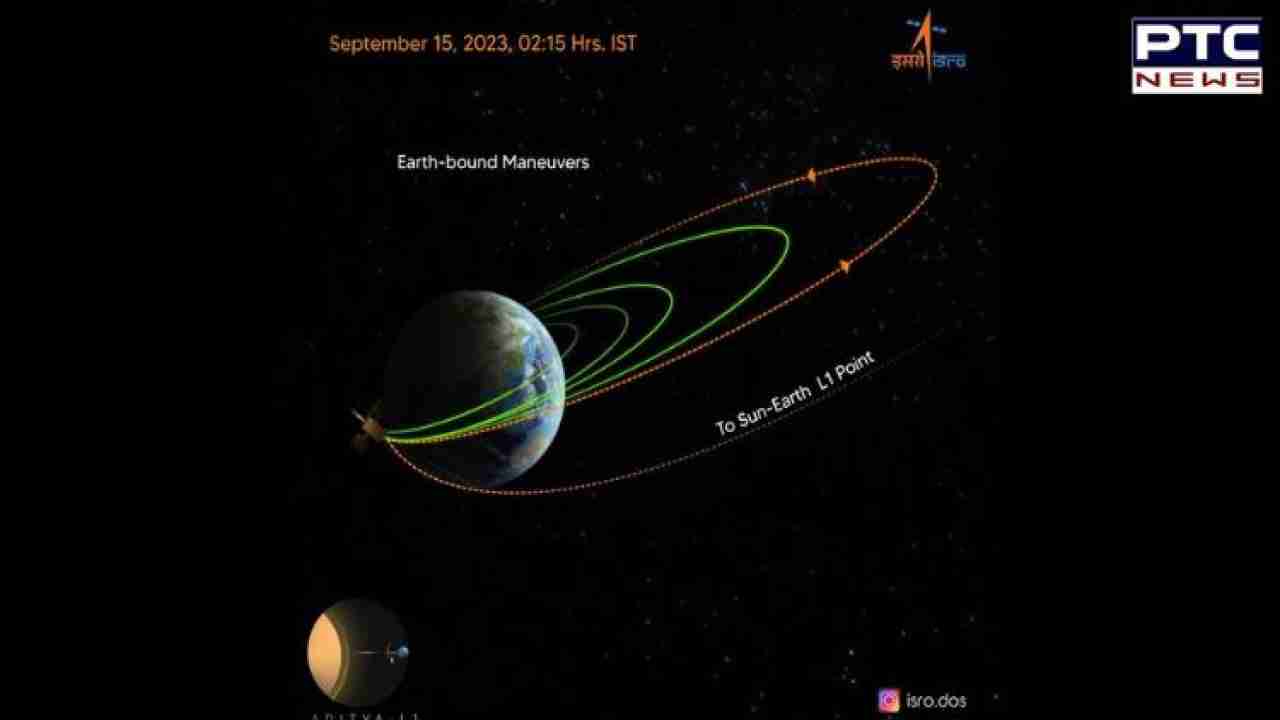

ISRO announces Aditya L1's successful fourth earth-bound maneuver
Bengaluru, September 15: India's inaugural sun-studying spacecraft, Aditya L1, successfully executed its fourth earth-bound maneuver, according to ISRO. The spacecraft, currently in a 16-day Earth orbiting phase, is preparing for its journey to the L1 Lagrange point.
ISRO's ground stations in Mauritius, Bengaluru, SDSC-SHAR, and Port Blair monitored this successful operation. A transportable terminal located in the Fiji Islands, designated for Aditya-L1, will assist in post-burn operations.
The new orbit achieved measures 256 km x 121973 km, with the next maneuver, Trans-Lagrangean Point 1 Insertion (TL1I), scheduled for September 19 around 02:00 Hrs IST.
Aditya-L1 Mission:
The third Earth-bound maneuvre (EBN#3) is performed successfully from ISTRAC, Bengaluru.
ISRO's ground stations at Mauritius, Bengaluru, SDSC-SHAR and Port Blair tracked the satellite during this operation.
The new orbit attained is 296 km x 71767 km.… pic.twitter.com/r9a8xwQ4My — ISRO (@isro) September 9, 2023
Aditya-L1, India's first space-based solar observatory, will study the Sun from a halo orbit around the Sun-Earth L1 Lagrange point, approximately 1.5 million km from Earth. The spacecraft successfully completed its first, second, and third earth-bound maneuvers on September 3, 5, and 10, respectively.
These maneuvers are crucial as they provide the necessary velocity for Aditya-L1's journey to the L1 Lagrange point. Upon reaching L1, the spacecraft will perform another maneuver to enter an orbit around this gravitational balance point between Earth and the Sun.
This strategic location enables continuous observation of the Sun without eclipses, providing real-time insights into solar activity and its effects on space weather. Aditya-L1 carries seven scientific payloads developed by ISRO and national research laboratories, including the Indian Institute of Astrophysics (IIA) and the Inter-University Centre for Astronomy and Astrophysics (IUCAA).
These payloads will observe the Sun's photosphere, chromosphere, and corona using electromagnetic particle and magnetic field detectors. Four of these payloads will directly view the Sun, while the remaining three will conduct in-situ studies of particles and fields at L1.
Scientists anticipate that the data collected by Aditya L1 will be instrumental in understanding phenomena such as coronal heating, coronal mass ejections, solar flares, space weather dynamics, and particle and field propagation.
The utilization of Lagrange points, where gravitational forces between the Earth and the Sun facilitate reduced fuel consumption, adds to the spacecraft's efficiency. Aditya L1's mission marks a significant advancement in India's space exploration endeavors, offering invaluable insights into solar phenomena and space weather dynamics.
Also Read: Nipah virus in Kerala: Containment zones established, ICMR supplies antibody | Key updates
- With inputs from agencies
